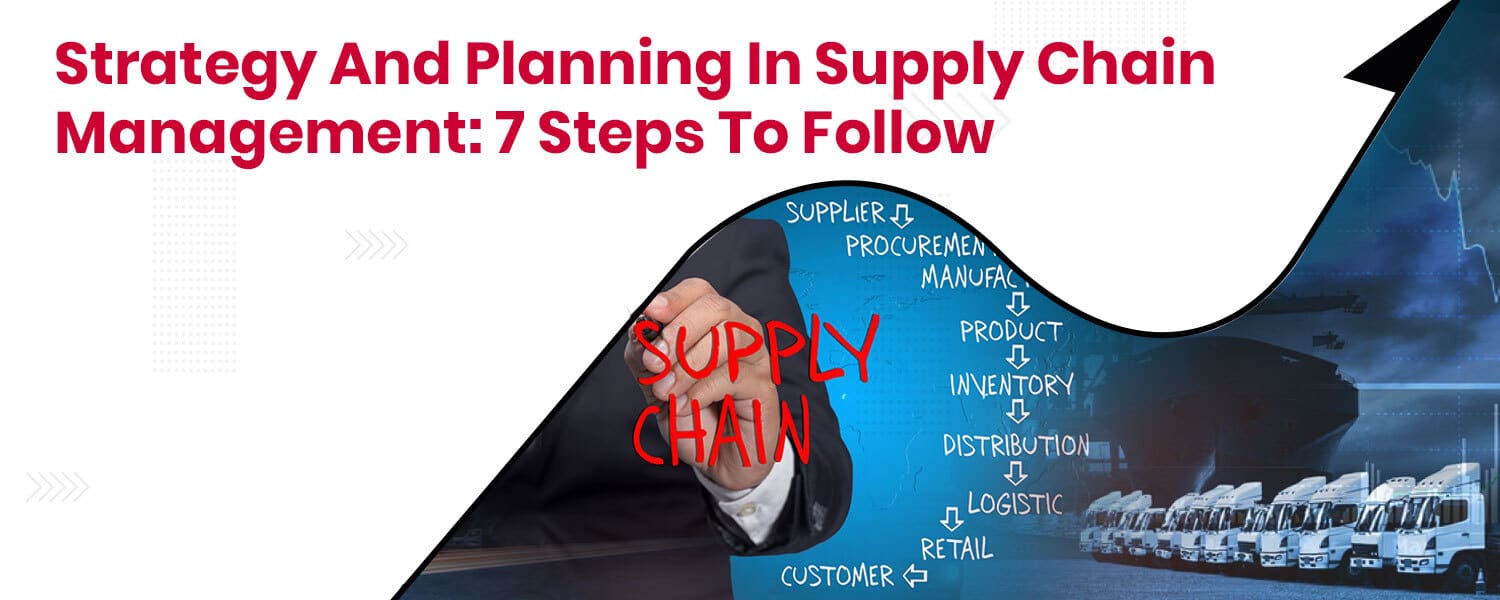The death of a business solely based on supply chain management is no small feat. It takes expertise, planning, and execution that can’t always be seen in one place or person alone to ensure everything runs smoothly from A-Z.
A product’s success heavily relies upon its inner workings: how they’re built, what connects them (and why), and which parts will ensure quality over quantity–it all matters! The same goes for any eCommerce brand looking to grow its customer base through consistent marketing campaigns without sacrificing efficiency. If you need to know where your products come into play, there could be potential.
You can only manage what you understand, so let this blog help by teaching the basics of supply chain planning. From strategic goals and objectives to key performance indicators (KPIs), it will cover everything necessary to implement an optimized process in your company!
What is Supply Chain Strategy and Planning?
Supply chain strategy and planning is a practical, calculating effort that works to optimize the process of forecasting demand while also making sure every opportunity has been positively utilized in time. The objective for this type of plan would be finding a balance between supply/demand so no threats or opportunities go wasted; it’s all about optimizing logistics management with efficient use cases across various industries such as manufacturing (for inventory), etc., which leads us onto our next point – executing plans on an everyday basis by fulfilling orders when they come through!
The use of software for supply chain planning and managing is a concept that has been introduced previously. Many businesses have turned to these programs to cut down on time spent with their inventory, allowing them more flexibility when it comes to making decisions about what products they should import from where or how many employees are needed at any given moment within the facility itself so that everything runs smoothly without anything getting lost along the process.
Seven Steps of Creating Strategy and Planning in Supply Chain Management
Demand planning and management
Demand planning and management predict the demand for a product in the coming future. This helps in keeping inventory updated to meet the demand. Supply chain managers predict demand based on past consumer behavior, market conditions, supply conditions, previous sales data, and other factors. Correctly analyzing the demand helps optimize the supply chain, lower the cost of operations, and help in reducing waste.
Supply management
Supply management is closely related to efficiently executing the sourcing and procurement process. It involves identifying trusted suppliers and finding the right source of raw materials, components, software, and everything used in product manufacturing.
Production management
It acknowledges how much raw material, machinery, and manpower is required for producing goods. Producing products according to the demand in the market is crucial for avoiding waste and overstocking. The supply chain manager utilizes previous market data, identifies how much product is to be produced, and stores it in warehouses for emergencies. Production management also involves ensuring that product quality should be at par.
Inventory management
Inventory management is all about product handling, warehousing, and order fulfillment. Managing inventory is harder than it sounds and important because it is a bridge between manufacturing products and delivering to end customers in a supply chain. Companies aim to manage optimum inventory levels and maintain stock in hand to offer the best service to the customer.
Many service aggregators like NimbusPost help inventory management and order fulfillment with the help of modern technology.
Pricing strategy
The pricing of a product is a work of intellectuals. The price directly impacts the sales of a product. For example, sales can go high when you cut the price, even in low demand in the market. Pricing also influences the whole supply chain. That’s why a product cost is set after excluding supply chain expenses and the customer’s purchasing strength.
Event management
In simple words, event management puts every event, sourcing, procuring, production, warehousing, and final delivery, into one thread. The supply chain is a process; critical thinking and planning are required in the back end to streamline this process. One single up and down in the event will disrupt the supply chain and hinder customer satisfaction.
Integrated business planning
Apart from supply chain management, a business must also deal with other aspects like finance, marketing, etc. Integrated business planning deals with integrating supply chain goals with the rest of the business.
Conclusion
To build a sustainable business, strategy and planning will always give you the upper hand. The same goes for building a strong supply chain for an eCommerce business. Demographics, industry trends, customer response, availability of raw materials, and many things must be kept in mind while creating plans for optimizing supply chains.
Companies now have the privilege of different software and service providers that help plan and optimize the supply chain, which was traditionally unavailable. Therefore, it is smart to adopt technology to optimize the process.
FAQs
How can I enhance my WMS?
WMS streamlines the entire warehousing and inventory management, optimizing the broader supply chain. To enhance the warehouse management system, upgrade to modern technology like robots, drones, etc., and optimize the stock tracking system.
How to run a warehouse efficiently?
To run a warehouse efficiently, focus on optimizing the internal operations, upgrade to modern inventory management technology, and educate workers for new changes. In addition, maximize the available space rather than establishing other warehouses.
What are the KPIs of WMS?
Key Performance Indicators for WMS are:
- Picking accuracy
- Rate of return
- Inventory turnover
- Backorder rate
- Order lead time




